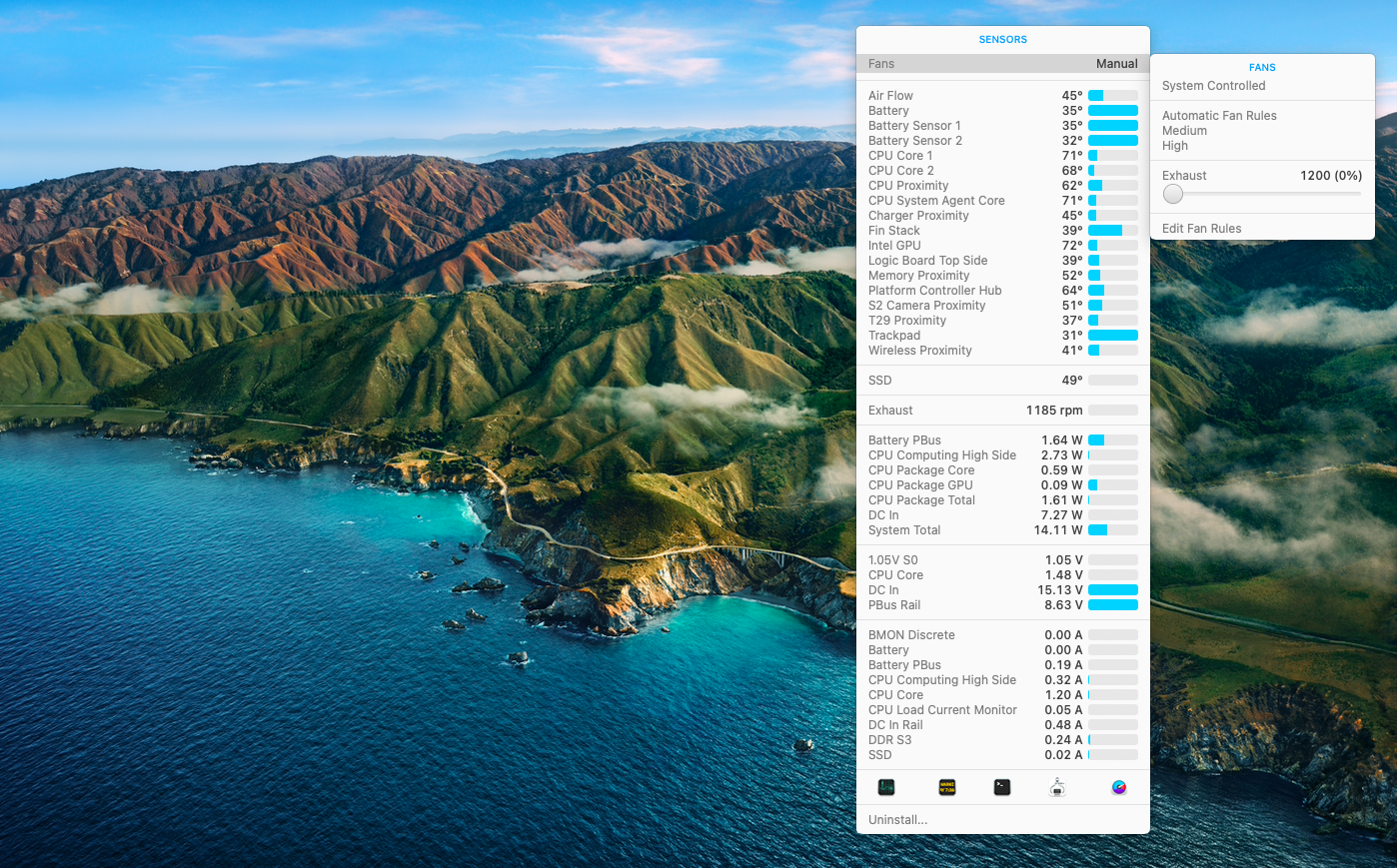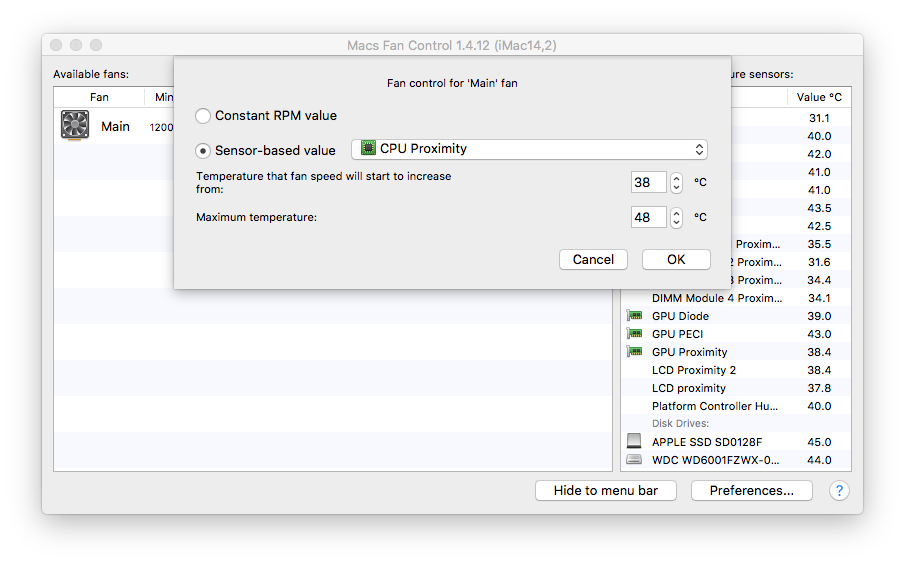

- Which temperature to look at macs fan control install#
- Which temperature to look at macs fan control software#
So your computer may run without incident at those high temperatures while mine may quickly fail. But since every instance of any model is unique some may last longer than others under the same heat stress.
Which temperature to look at macs fan control software#
Although you certainly can run software that drives temperatures up near the automatic shutdown limit, the computer isn't intended to operate constantly at those temperatures without the likelihood of a reduced life expectancy. The XLab FAQs and read the FAQ on removing software.Īpple doesn't weigh in because they believe, I'm assuming, that the computer will last its expected lifetime if used in a "normal" fashion. Look for them at VersionTracker or MacUpdate.

There are also several shareware utilities that can uninstall applications: Be sure you also delete this item as some programs use it to determine if it's already installed. The item generally has a ".pkg" extension. Usually with the same name as the program or the developer.
Which temperature to look at macs fan control install#
Some applications install a receipt in the /Library/Receipts/ folder. You can modify Spotlight's behavior or use a third-party search utility, Easy Find, instead. Unfortunately Spotlight will not look in certain folders by default. If an application installs any other files the best way to track them down is to do a Finder search using the application name or the developer name as the search term. Look for them in /Library/LaunchAgents/ and /Library/LaunchDaemons/ or in /Home/Library/LaunchAgents/. Some software use startup daemons or agents that are a new feature of the OS. Locate the item in the list for the application you want to remove and click on the "-" button to delete it from the list. Open System Preferences, click on the Accounts icon, then click on the LogIn Items tab. Log In Items are set in the Accounts preferences. Startupitems are usually installed in the /Library/StartupItems/ folder and less often in the /Home/Library/StartupItems/ folder. Some applications may install a startupitem or a Log In item. Again, they don't do anything but take up disk space once the application is trashed.

You can also delete the folder that's in the Applications Support folder. You can also check there to see if the application has created a folder. Some applications may install components in the /Home/Library/Applications Support/ folder. In some cases the uninstaller may be part of the application's installer, and is invoked by clicking on a Customize button that will appear during the install process. Some applications may install an uninstaller program that can be used to remove the application.

If you want you can look for them in the above location and delete them, too. Although they do nothing once you delete the associated application, they do take up some disk space. Applications may create preference files that are stored in the /Home/Library/Preferences/ folder. Most OS X applications are completely self-contained "packages" that can be uninstalled by simply dragging the application to the Trash. However, you need to return the fan configuration to its original setting(s) which is an idle speed of 2000 RPM for each fan (if your model has more than one.) Once you do that you can then uninstall the software using the uninstaller, if it has one. So uninstalling the software is appropriate. The OS is already configured to increase fan speeds in response to higher operating temperatures. There really is no need for third-party fan controls.


 0 kommentar(er)
0 kommentar(er)
